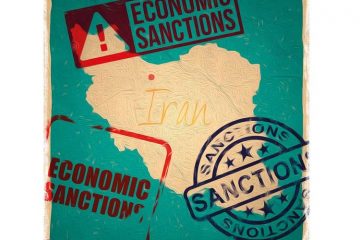Eisenhower, the American Leader of the Distorted Coup d’état of August 28, 1953
The coup d’état of August 19, 1953, which had been planned by the US and British intelligence services at the US embassy in Tehran for several months, led to the removal of Mosaddegh and the return of Mohammad Reza Pahlavi to Iran. The main part of the coup was formed by the Americans under the name of Operation Ajax, in which American officials, with the help of Ashraf Pahlavi, the Shah’s twin sister, were tasked with persuading him to sign a decree dismissing Mosaddegh. In Mohammad Reza Pahlavi’s memoirs, it is stated that at first he feared a popular uprising against the Kingdom of Iran by signing a decree dismissing Mosaddegh, but he signed the decree with the assurance given to him by Ashraf Pahlavi on behalf of the United States and the British. According to US intelligence documents, Roosevelt as the commander of the coup d’état on August 19, 1953, after Mosaddegh was ousted and General Zahedi was appointed Prime Minister of Iran, wrote in English Al-Hamdallah (meaning praise the lord in Arabic) and then said that the pressure finally paid off.
Reducing the Pressure of Public Opinion in the Post-Coup Period
Naturally, after the coup d’état of August 19 and the appointment of Zahedi, a large part of the people was upset and perhaps angry about this action, and in this regard, the Pahlavi government was responsible for purging and justifying the coup, as well as the illegal actions of Mohammad Reza Pahlavi at that time. In the very first days after the coup, various sections of the Pahlavi government tried to make the name of the coup gradually disappear from the people and instead form a national uprising and resurrection. The term national resurrection caused us to witness a kind of historical revision of previous events and to suggest that the incident of August 19 occurred at the national will of all Iranians. The term “national resurrection” led to widespread repressions under the pretext of supporting the people, and successive measures were taken to delegitimize Mosaddegh. Mohammad Reza Pahlavi described Mosaddegh as a negative, suspicious, and demagogic person, and also instilled his dependence on Britain.
The Role of the United States in Delegitimizing Mosaddegh
The United States was one of the main factors of the delegitimization in the Pahlavi regime during the post-coup period. In this regard, the propaganda of the American media as well as the officials of this country, by giving a speech, introduced the national resurrection as a spontaneous and popular movement and considered it as the public will of the Iranian people against the internal dictators (Mohammad Mosaddegh). The US operational axes to legitimize the Pahlavi regime and delegitimize Mosaddegh are as follows:
- In a speech entitled “Peace and Justice” immediately after the coup d’état, Eisenhower, President of the United States, interpreted the coup in Iran in such a way that the Iranians spontaneously rose up against an irresistible dictator (Mosaddegh) for fear of communism.
- The distortion of reality by the American media was formed immediately after the fall of Mosaddegh by journalists, following the example of Eisenhower. The Times headlines that Iranian thugs revolt for their king. In an article titled “Oil, Blood and Politics”, the Reporter also mentioned Mosaddegh as the cause of the crisis in the country. In this regard, the Christian Science Monitor illustrations, by inducing the prevention of a communist coup, described the incident of August 19, 1953 as a popular action in order to prevent Mosaddegh’s treacherous actions.
- After Mosaddegh was ousted, US dollars flowed into Iran to show security and prosperity in society. Henderson, the then US ambassador to Iran, had officially declared that he would provide $ 23.4 million in aid to Iran, and the US government provided $ 45 million in grants to Iran. These dollars were in fact the same loans that Mosaddegh had repeatedly requested and had been postponed by the American side. The increase in US financial aid, as well as the creation of relative prosperity, right after Mosaddegh’s ouster, signaled to the Iranian people that the main cause of the country’s economic problems before the coup was Mosaddegh’s presence as prime minister.
- Use of psychological operations tools by US media propaganda: Since the main policy of Eisenhower and the US spy agency in support of the government of Mohammad Reza Pahlavi was to delegitimize Mosaddegh, therefore the coverage of Mosaddegh’s confession court was accompanied by media policies as well as censorship of reality. Although Mosaddegh has repeatedly declared himself prime minister in court, defending national democratic law and ideals, exposing US imperialist policies, and even going on a hunger strike, in the end what was portrayed by the American media was a strange image of a The old man had failed. An old man who seeks rowdyism and escapes from reality due to his failure in politics.

Conclusion
The shift in the intellectual paradigms of the general public from the term August 19 coup to the national resurrection was a common chapter in the media affiliated with the Pahlavi government, as well as the American and British media, which was partly fruitful with US financial support. What Mosaddegh had instilled in the public mind as nationalism after the nationalization of the oil industry took on a communist status through the media affiliated with the US intelligence services, and in the public mind, a kind of alliance between communism and Mosaddegh was formed.
The induction of Mosaddegh’s communist ideas, along with the improvement of economic conditions in the post-coup period, reduced the pressure of public opinion on the coup d’état of August 19, 1953, and not only caused the political backwardness of the nationalist currents to fail, but also the Tudeh Party to face much criticism from within.
References
- The Political Economy of Modern Iran: Despotism and Pseudo-Modernism (1926-1979), Homa Katouzian
- The battle for power in Iran: Why and how did the clergy win?, Mohammad Samii, Ney Publishing
- U.S. Foreign Policy and the Shah: Building a Client State in Iran, Mark J. Gasiorowski, Cornell University Press



0 Comments